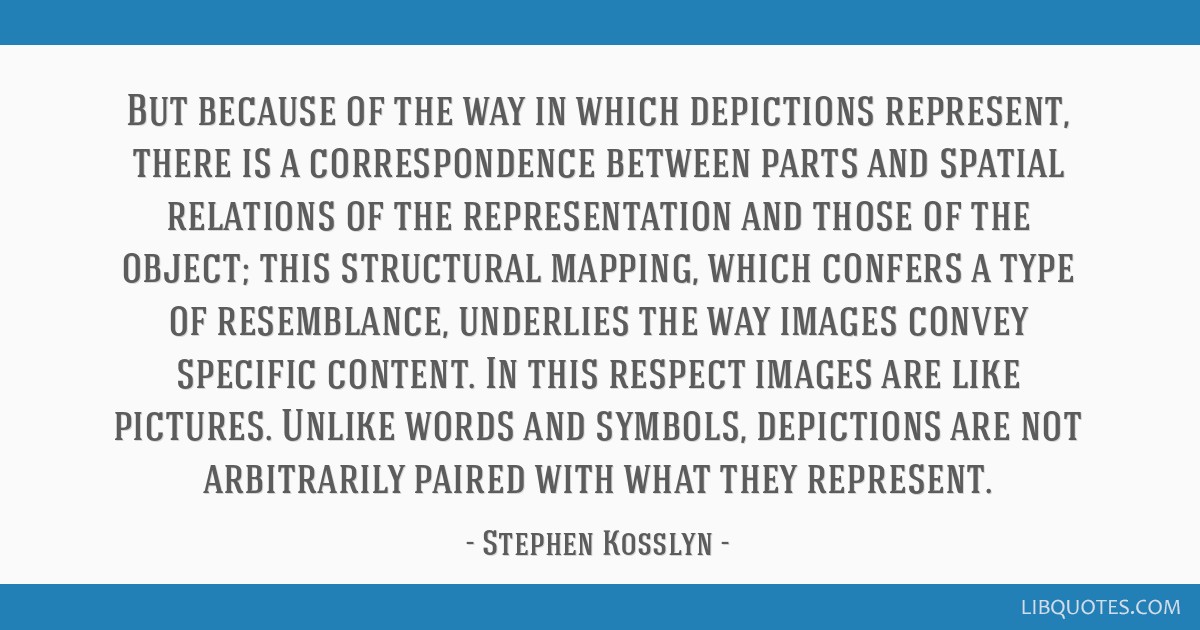But because of the way in which depictions represent, there is a correspondence between parts and spatial relations of the representation and those of the object; this structural mapping, which confers a type of resemblance, underlies the way images convey specific content. In this respect images are like pictures. Unlike words and symbols, depictions are not arbitrarily paired with what they represent.
Stephen M. Kosslyn, William L. Thompson, Giorgio Ganis (2006), The Case for Mental Imagery. p. 44; Cited in: Michael R. W. Dawson (2013). Mind, Body, World: Foundations of Cognitive Science. p. 108























